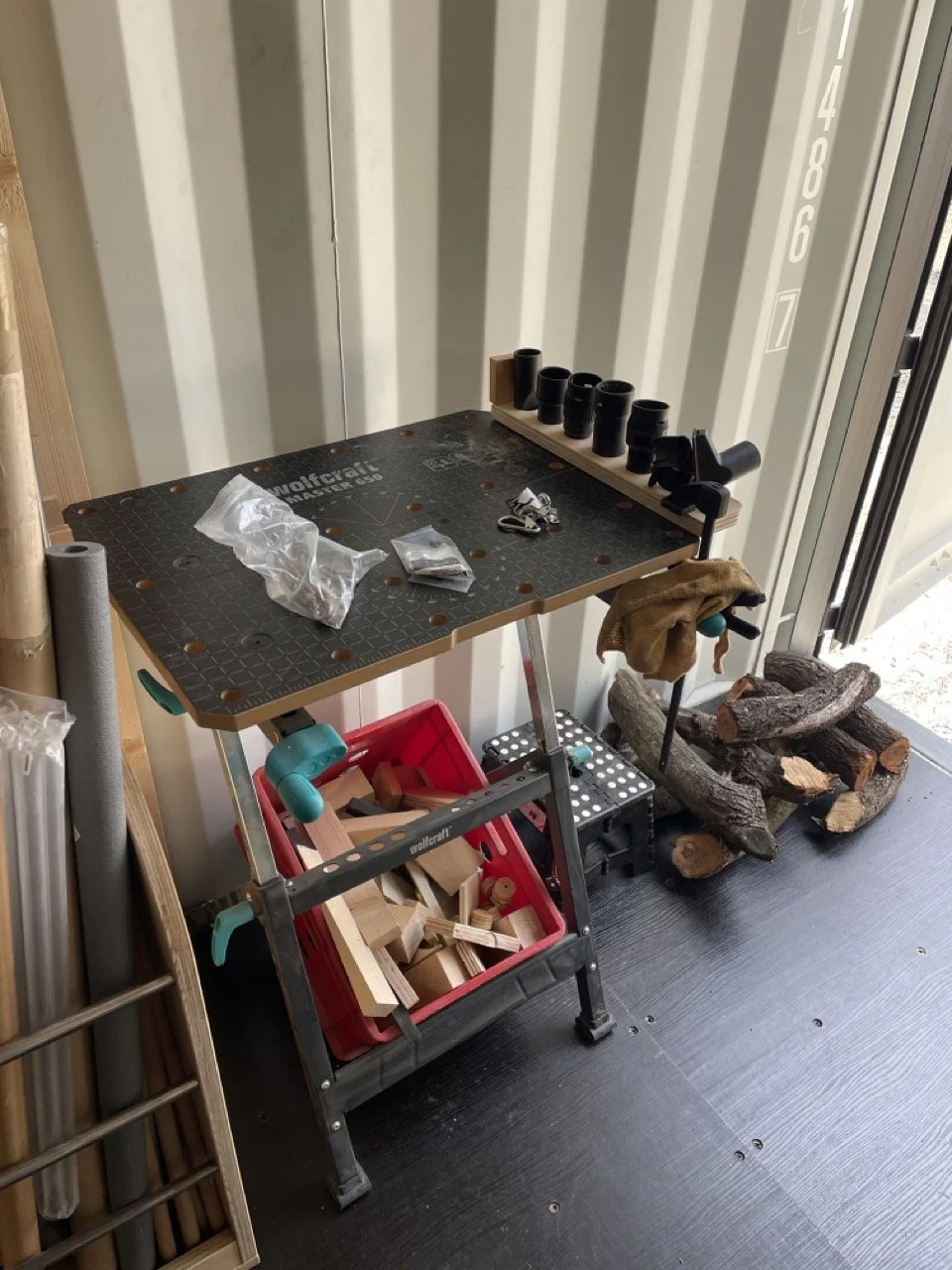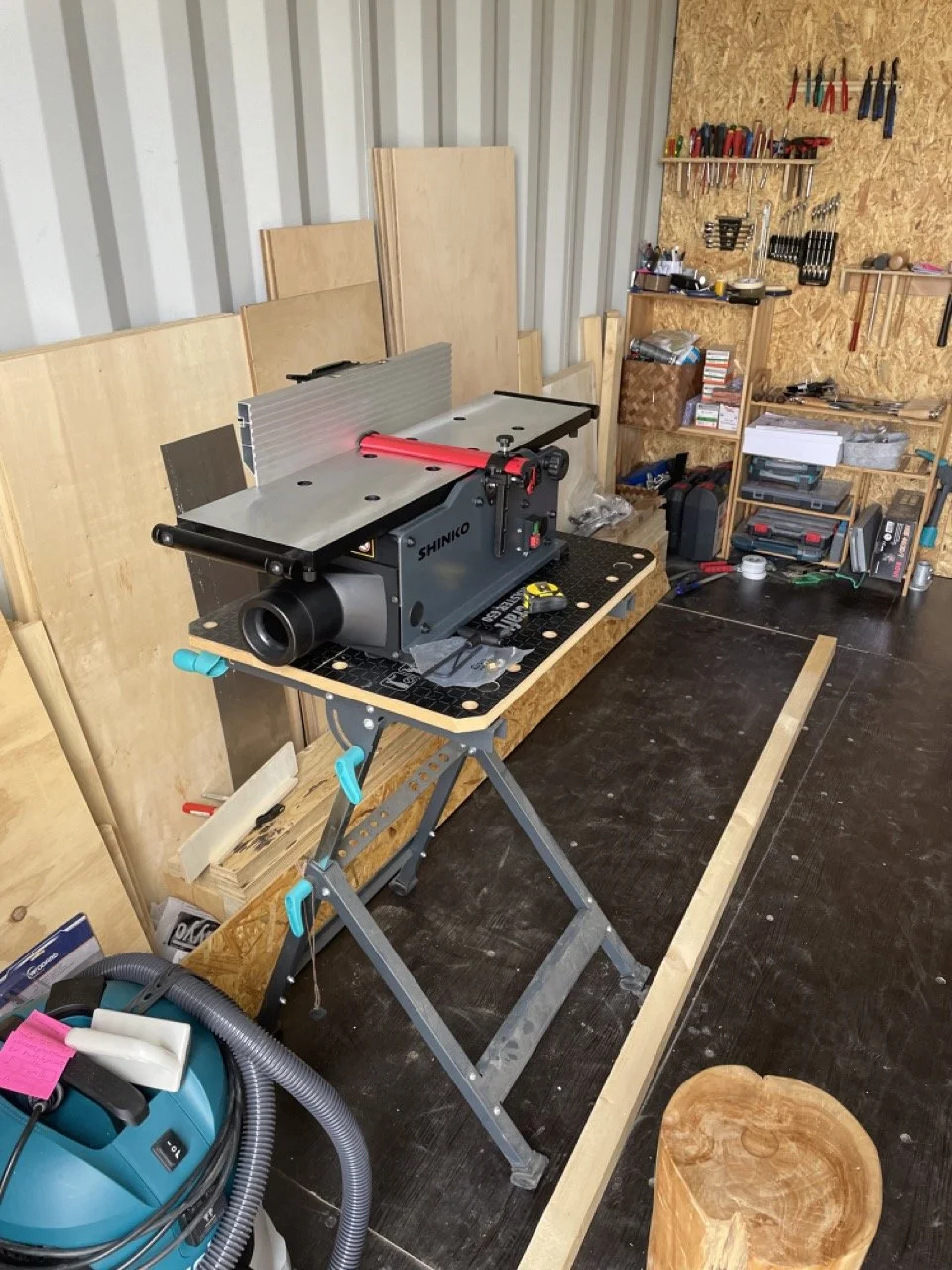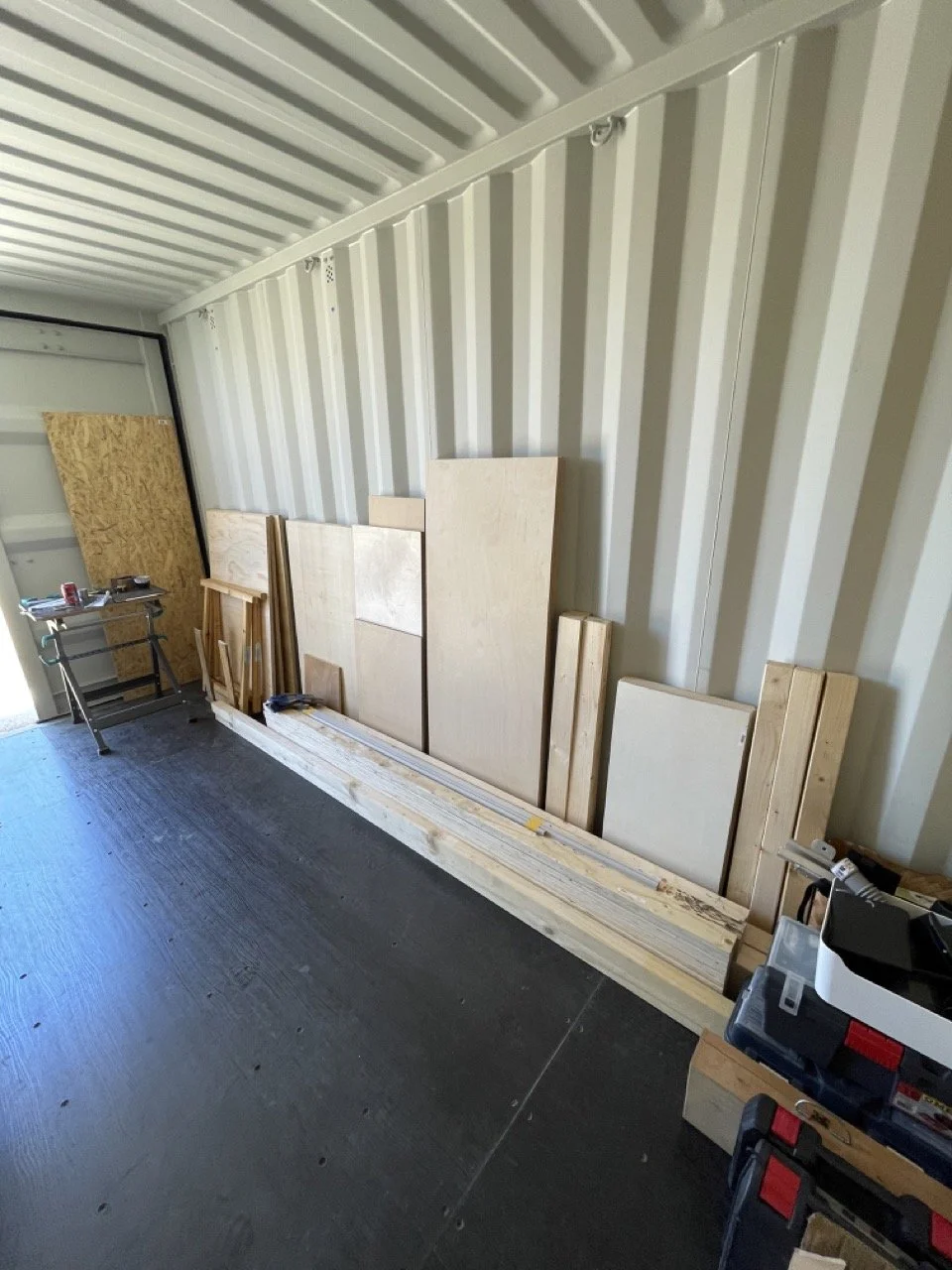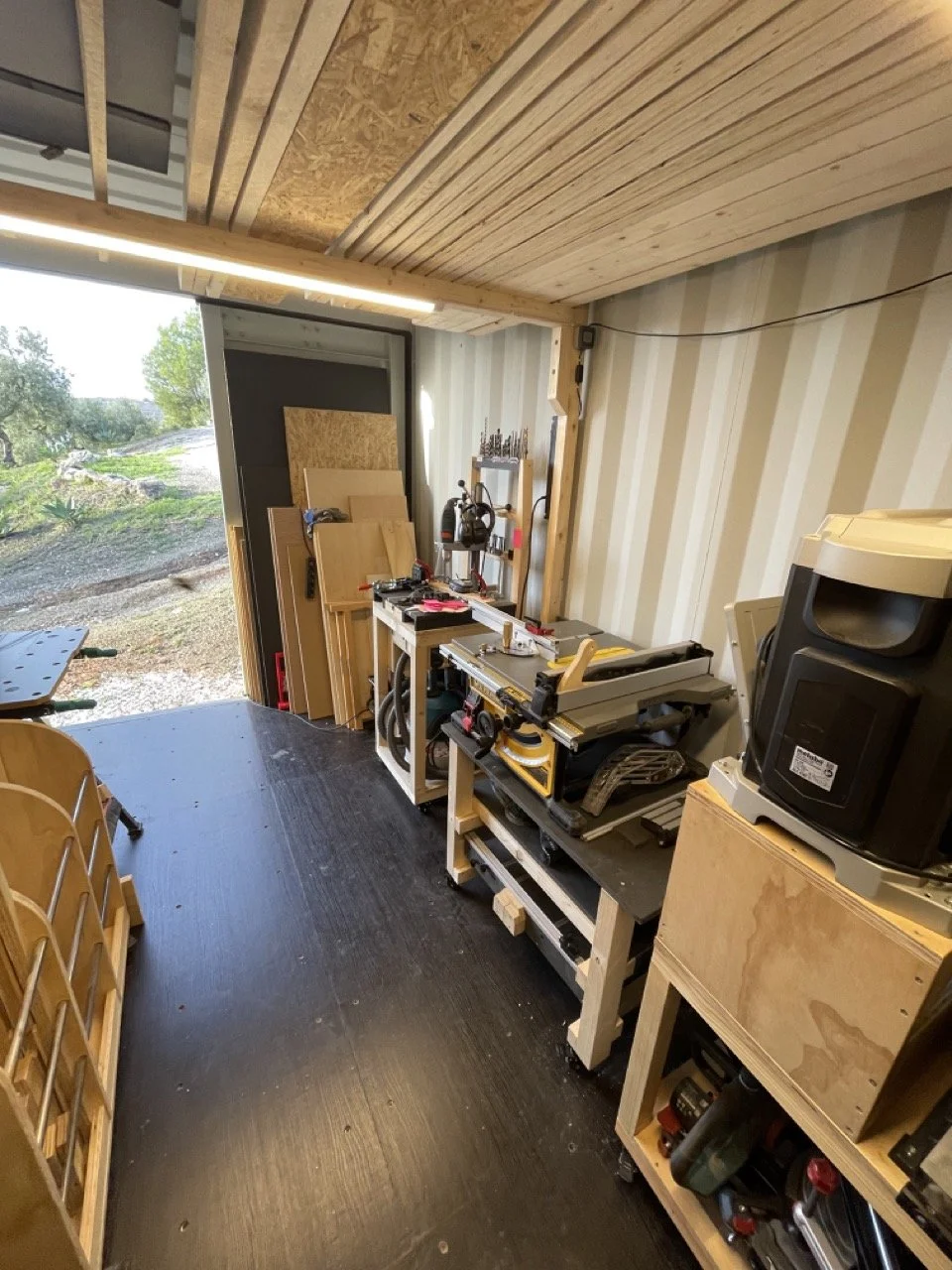The Workbench That Never Was: A Lesson in Tiny Workshop Wisdom
Every woodworking guide tells you the same thing: start by building a proper workbench. It's Workshop 101, they say. So naturally, that was my first plan too. But sometimes the best lessons come from plans gone astray.
Today, my "workbench" is a modest Wolfcraft table that found its way to me through airline miles—hardly the craftsman's dream bench you'd see in woodworking magazines. It's light, adjustable, and most importantly, it knows when to get out of the way. When I need it, it's there. When I don't, it doesn't command precious space in my 20-foot world.
What became clear as my workshop evolved was that stands and supports for essential power tools needed to take priority. Each new addition—the table saw, band saw, planer, jointer, jig saw, and drill—demanded its own stable foundation. In a confined space, these tool stations became the backbone of my workshop, effectively serving many of the functions a traditional workbench would provide.
For larger projects, I simply step outside. The olive grove becomes my workshop extension, with pallets serving as impromptu assembly tables under the Spanish sky. Is it perfect? No. Do I sometimes wish for a traditional workbench when I need to plane a board or make precise hand cuts? Of course.
But this experience taught me something valuable about tiny workshop life: every cubic centimeter matters, and sometimes what you don't add to your space is as important as what you do. That Wolfcraft table isn't just a compromise—it's a reminder that working within constraints often leads to more creative solutions.
In a tiny workshop, each tool, each surface, each storage solution must earn its place. The dream of a massive hardwood workbench had to yield to the reality of my container workshop, and in doing so, opened up possibilities I hadn't considered. Sometimes, the best workshop solutions aren't about recreating traditional setups in miniature, but about rethinking them entirely.



